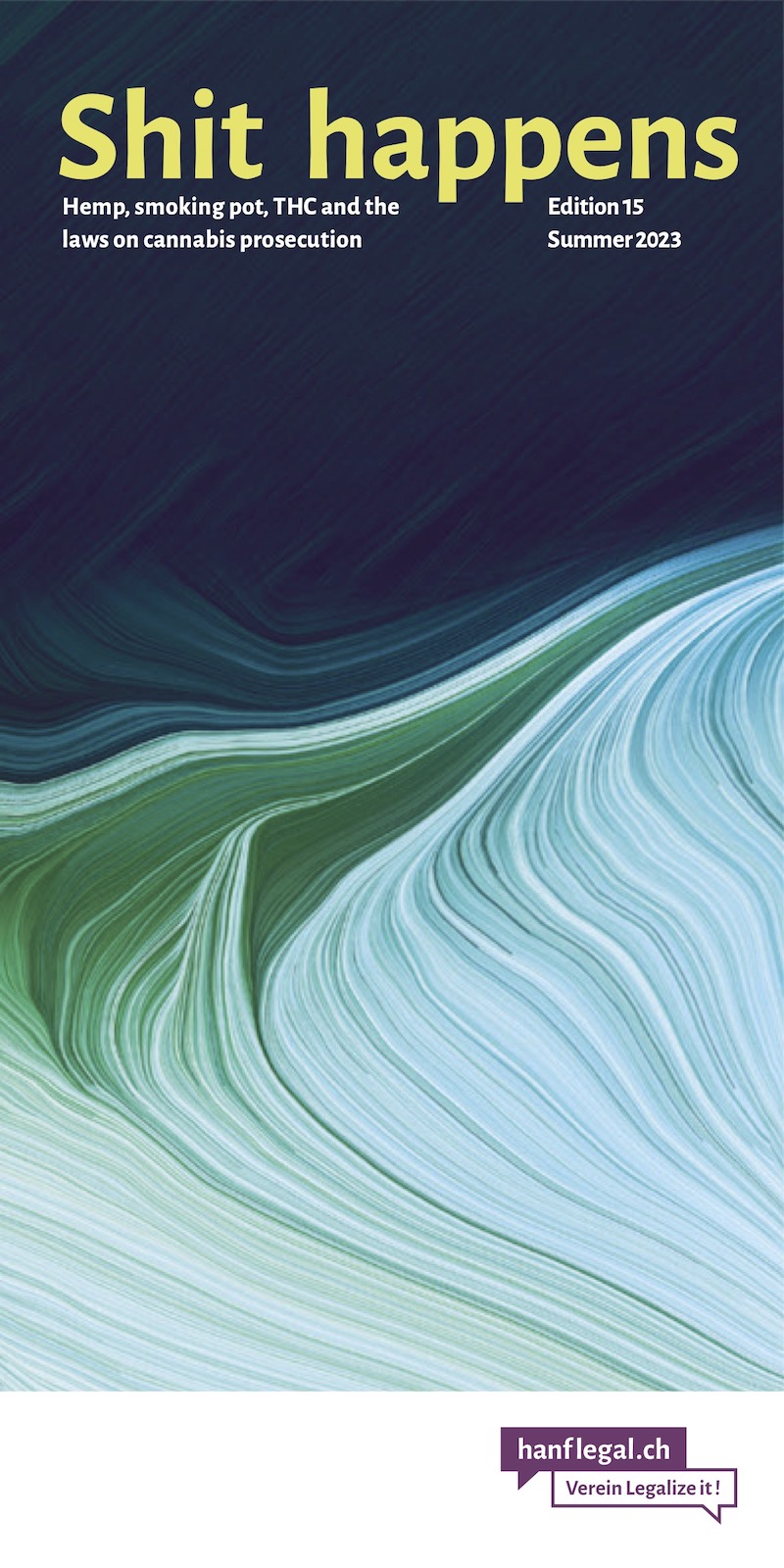- THC & Law:
New THC limit in road traffic?
A report outlines the situation of the THC limit in road traffic and works out three possible solutions to the limit problem. But a report is not yet a new approach. For this, some pressure must be generated, for which we also want to make a contribution.
Prehistory of the report
The 2018 annual report of the Institute of Forensic Medicine of the University of Basel (IRM Basel) revealed that it had won a major tender with several sub-projects of the Federal Office of Public Health (FOPH) on cannabis-specific projects. What exactly was planned then became clear for the first time in August 2019, when Markus Jann, then Head of the Drugs Section of the Federal Office of Public Health, announced in the NZZ am Sonntag that the situation of the THC limit in road traffic was “legally unsatisfactory” and shortly afterwards added in the SRF Tagesschau that the Federal Office of Public Health wants to find out “where the border to intoxicating effect lies with cannabis”.
The situation in Switzerland
In an ordinance of the current Road Traffic Act, which has been in force since January 1, 2005, it was stated in turn that “tetrahydrocannabinol (cannabis) detected in the blood leads to inability to drive”. For this purpose, a fixed THC limit of 1.5 µg/liter of whole blood was established (“µg” means microgram, i.e. one millionth of a gram), which with a tolerance of 30% leads to a de facto limit of 2.2µg/liter of whole blood, above which the inability to drive is proven. This limit is a purely analytical value, which means that it says little about the “stonedness” of a person. Since THC can be detected in the body of a person much longer than it takes effect, this leads to the fact that users with this limit value are classified as unfit to drive for a very long time. The association Legalize it! has therefore been demanding for a long time that a limit value must be determined that has to do with the concrete impairment - and not simply an analysis value may be taken.
This is what the report is about
In a report published in December 2020, a team from IRM Basel has now compared the situation of THC limits around the world and worked out three possible solutions for Switzerland. Based on this research, according to which the first signs of impairment arise from about 1 to 2.5 µg/liter THC in whole blood, and restrictions corresponding to a blood alcohol concentration of 0.5‰ begin at about 3.0 to 4.1 µg/liter THC in whole blood, the report presents the following three possible solutions:
⇒ Variant 1: Zero tolerance and thus an analytical limit of 1.5 µg/liter THC in whole blood is maintained. Thus, with a tolerance of 30%, the inability to drive is proven from a THC concentration of 2.2 µg/liter whole blood.
⇒ Variant 2: The limit value is raised to a risk limit value of 3 µg/liter THC in whole blood. This means that those drivers who actually show measurable impairment are prosecuted. Taking into account a tolerance of 30%, the inability to drive is considered proven from a value of 4.3 µg/liter THC in whole blood.
⇒ Variant 3: A multilevel system with two limit values, 2.2 µg/liter THC in whole blood and 4.3 µg/liter THC in whole blood, is implemented (including a tolerance of 30%). At the upper limit, the inability to drive is considered proven and an assignment to a driving fitness assessment is made. For the range between the limit values, administrative measures can be implemented. In the case of mixed consumption with alcohol, however, the inability to drive is already deemed to exist from the lower limit value, and a clarification of fitness to drive is carried out.
We see: Variant 1 would not change anything in the current system, variant 2 would raise the THC limit and variant 3 would be something in between.
What the report means
Basically, the report is initially a situation analysis, the proposals are not binding in any form for review. The report also states that the responsible Federal Roads Office (FEDRO) is “rather critical” of a review of the current rule. FEDRO spokesman Thomas Rohrbach adds in the so far only media article that has appeared on this report (Tagesanzeiger, December 2020) that FEDRO considers a review to be “conceivable” after all, but considers three points to be important: Unlike alcohol, not enough research has been done on cannabis to determine exactly how its consumption in different forms and quantities affects individuals. Moreover, there is no clear declaration of the THC content of cannabis. In contrast to alcohol, the THC concentration cannot be calculated back to the time of driving, but this is necessary because the blood sample may not be taken until hours after driving.
It is becoming clear that if progress is to be made on this issue, political pressure must be generated. That is why it is important that people who have the interests of THC users at heart organize themselves and thus also increase the pressure.
Support our work with a donation:
Bank transfer
Account number (IBAN):
CH02 0900 0000 8709 1354 3
Full account details
Or scan this QR code with your eBanking App (ZKB, Revolut, Postfinance, …):

Or open/share the QR code as PDF file with your eBanking App.
Credit card
Donate via credit card
Verein Legalize it!
Quellenstrasse 25
8005 Zürich
Threema ID 7NH65RBY
Don’t miss anything! Follow us on social media:
